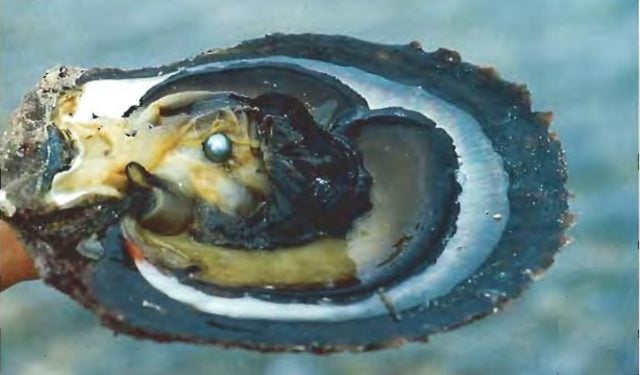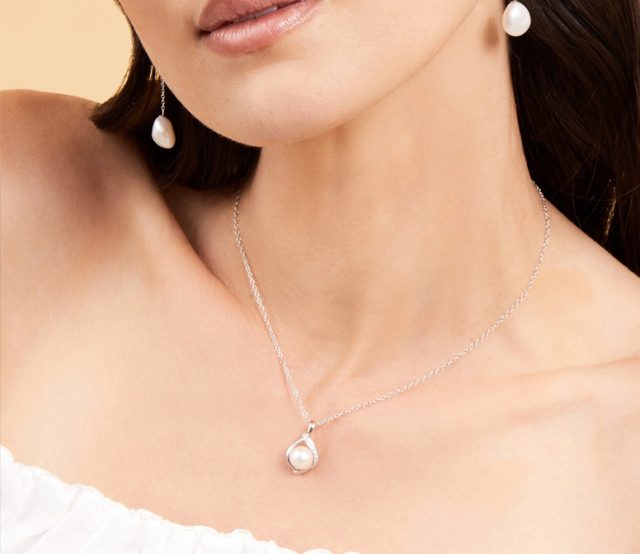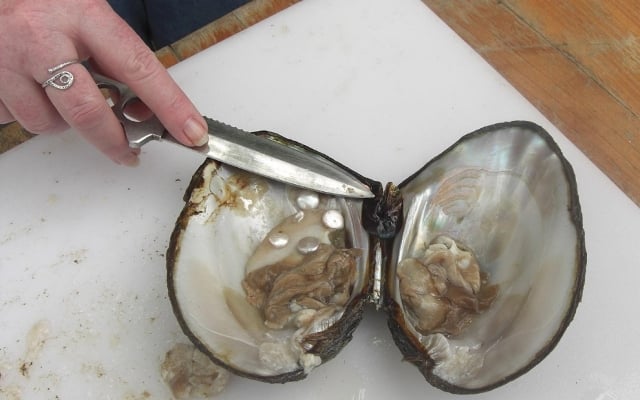Last Updated on May 1, 2023 by Carla Jonas
Pearls are precious gems that come from the seas. They are the ‘babies’ of the almighty oysters, natural miracles created by Mother Nature herself. But, what exactly is an oyster? Moreover, how do oysters make pearls?

Frequently Asked Questions
1 to 10,000. The chances of finding a natural pearl in an oyster at a restaurant are very slim, but still possible. The chances of finding a gem quality pearl in an oyster? No less than 1 in 1 million.
Oysters can live up to 20 years. Once they reach about 1 year, they are considered mature. Only mature oysters can produce pearls. Juvenile oysters are called ‘spat’.
Oysters are mostly vegetarians and they consume algae and other small food particles.
Yes, pearls grow in oysters, clams and a variety of other mollusks.
Oyster are a type of marine animals that belong to the families Ostreidae and Aviculidae, They live in oceans, in warm coastal waters.
What Are Oysters?
Oysters are sea animals that present rough, irregular shells, depending on their type – there are no less than 200 types of oysters out there. Oysters are known for cleaning the water of the oceans, being able to process up to 10 liters of water / hour. The most cultivated types of oysters are the Pacific oysters.
Pearl Oysters: The Function of the Shell
The oyster’s valves are usually kept open, so the oysters can eat, which is necessary for survival.
Because they are mollusks, their way of eating is by drinking water and using gills to filter nutrients from it. Next, these nutrients travel to the oyster’s stomach for digesting, and excess water is spit out through the shell.

8 Main Body Parts of an Oyster
What is an oyster? Let’s go over a pearl oyster’s basic anatomy to help you get a better understanding. Inside the shell of an oyster, you’ll find eight primary body parts:
- Mouth
- Heart
- Stomach
- Intestines
- Mantle
- Anus
- Abductor Muscle
- Gills
The pearl’s mantle is responsible for producing the nacre, which actually forms the gem inside the oyster (see How Do Oysters Make Pearls section below).
How Do Oysters Make Pearls?
Oysters have a very interesting reproduction system, mostly because some types have multiple sex organs. According to experts, some have both female and male organs, while others just have one or the other. Those with female sex organs release millions of eggs into their waters. For both sexes, pearls are reproduced inside the oysters.
How Are Natural Pearls Born?
How are pearls made? Or, more precisely, how do oysters make pearls? The life of a natural pearl, one born in the ocean seas, begins when an intruder invades the oyster’s shell. In many cases, this is simply a grain of salt. However, the irritant can also be a sand or dust particle. Once it slips inside the mollusk’s shell, the animal feels the need to protect itself from the irritant.

At this point, the oyster goes into defense mode. It begins to cover the object with layers of a secretion known as nacre. Multiple layers of nacre are formed, also known as Mother of Pearl, which continue to coat the irritant. In time, a natural pearl is born.
Pearl divers must go deep into the ocean’s waters to retrieve oysters, hoping to find a beautiful gem. Not only is this dangerous, but it is the main reason most experts believe very few natural pearls still exist in the sea. That’s why cultivating pearls the safe way is important in order to meet market demands.

PEARL SPOTLIGHT:
Oysters Pinctada Fucata, also known as the Akoya pearl oysters, are a species of marine bivalve mollusk in the family Pteriidae, able to produce stunning pearls, including ultra lustrous gems and larger pearls. If you love a radiant jewelry piece, be it gorgeous pendants, rings or pearl earrings, opt for a timelessly elegant Akoya Pearl design, perfect for a day-to-night look.
How Are Cultured Pearls Formed?
Or, more intriguing, why do oysters make pearls? Where do pearls come from? Cultured pearls are created the same way as natural pearls. However, there are two distinct differences between naturally developed pearls and cultured pearls:
- Cultured pearls are nurtured by pearl farmers on pearl farms instead of in the ocean
- The irritants used to activate the nacre in cultured oysters are manually inserted by the pearl farmers
Pearl oyster divers have depleted the seas of the precious gems. These days, it’s almost impossible to find the gemstones in the ocean’s blue. Cultured pearl farms make it possible to “create” the gems by not having to dive for oysters.

The pearl farmers insert an irritant inside the oyster shell or the mollusk’s shell manually, usually a shell bead nucleus. From there, they feed, care for and nurture the mollusks, keeping them safe from environmental conditions as well as predators. If not, they will not be able to successfully make pearls that are valuable to the market.
How do oysters make pearls, after the irritant insertion? Basically, after the irritant is inserted, the oysters kick into defense mode, creating layer upon layer of nacre, just like with the natural pearl process. This also answers the question: ‘why do oysters make pearls?’ They make pearls as a result of this defense mechanism, coating the irritant in layers and layers of nacre.
Considering the pearl formation process, not only are cultured pearls actually real pearls, they are more abundant, which means they are more affordable than natural pearls.

PEARL SPOTLIGHT:
They are lustrous yet discreet and suitable for any budget. Plus, these pearls come in a gorgeous range of colors. Freshwater Pearls are abundant in nature and they come with affordable prices. Discover the beauty and charm of this iridescent gem in our premium collections of Freshwater Pearls, featuring dainty and larger pearls, round and baroque gems in stunning shades. Have your pick from pearl necklaces, earrings, pearl bracelets, pendants and rings for that extra note of glow to any outfit.
- Where Does Mother of Pearl Come From? - January 4, 2021
- How to Buy Pearls: Everything You Need to Know - May 2, 2018
- Your 2018 Guide to Wearing Men’s Jewelry with Class & Sophistication - February 19, 2018
